Abstract
Key pecking by three pigeons was maintained under a multiple fixed-interval fixed-ratio schedule of food presentation. The fixed-interval value remained at 3 minutes, while the fixed-ratio size was increased systematically in 30-response increments from 30 to either 120 (two pigeons) or 150 (one pigeon). At least two lower fixed-ratio values were also redetermined. The effects of ethanol (5 to 2.5 g/kg) were assessed at each of the different schedule parameters. Both overall and running response rates under the fixed-ratio schedule decreased with increases in the size of the fixed-ratio schedule; pause duration under the fixed-ratio schedule was directly related to increases in fixed-ratio size. Overall and running rates of responding under the fixed-interval schedule changed little with increases in the size of the fixed-ratio schedule. Despite the relative invariance of fixed-interval responding across the different fixed-ratio values, the effects of ethanol on responding under the fixed-interval schedule differed depending on the size of the fixed-ratio schedule. Greater increases occurred in both overall and in lower local rates of responding under the fixed-interval schedule when the fixed-ratio value was 120 or 150. The effects of ethanol on responding under the fixed-ratio schedule also depended on the size of the fixed ratio. Increases in responding under the fixed-ratio schedule were typically greater at the higher fixed-ratio values where response rates were lower. When the effects of ethanol were redetermined at the lower fixed-ratio parameter values, rates and patterns of responding were comparable to those obtained initially. However, the dose-effect curves for responding under both fixed-ratio and fixed-interval schedules were shifted up and to the right of those determined during the ascending series. The effects of ethanol can depend on rate or responding, behavioral history, and the context in which behavior occurs.
Full text
PDF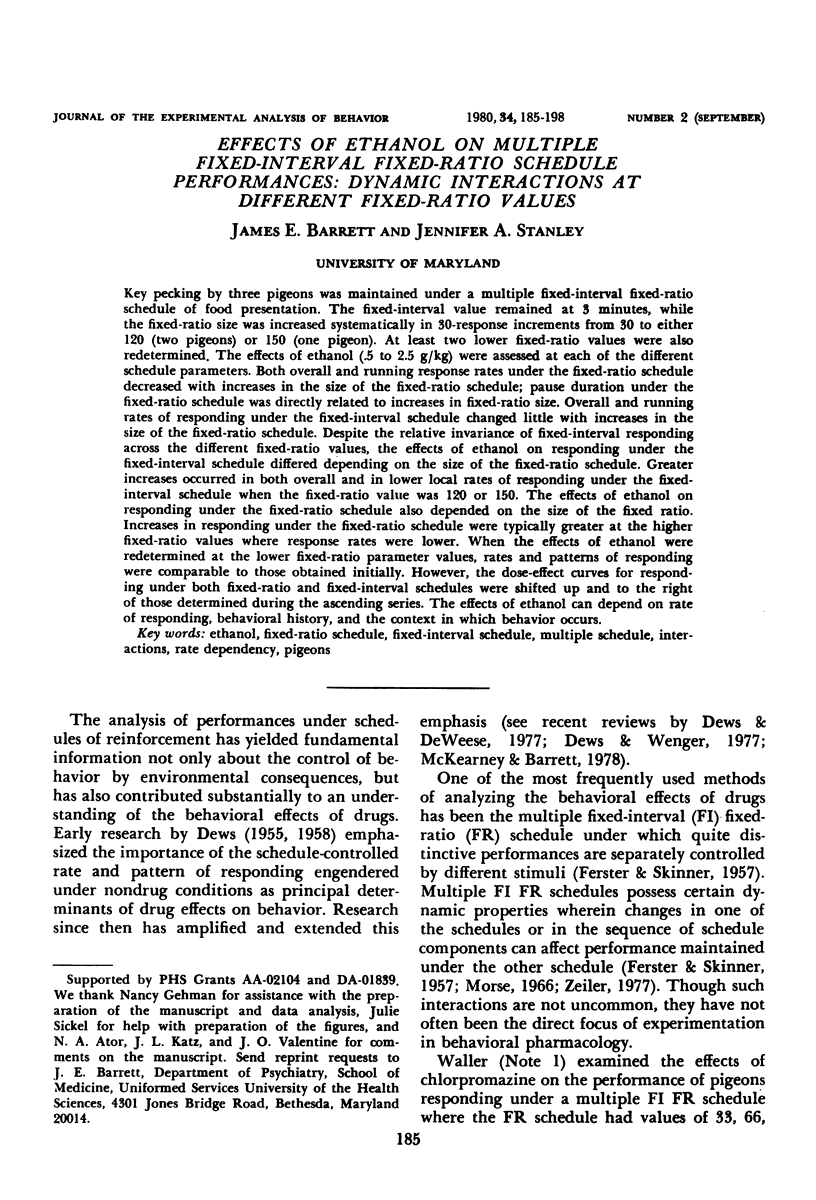
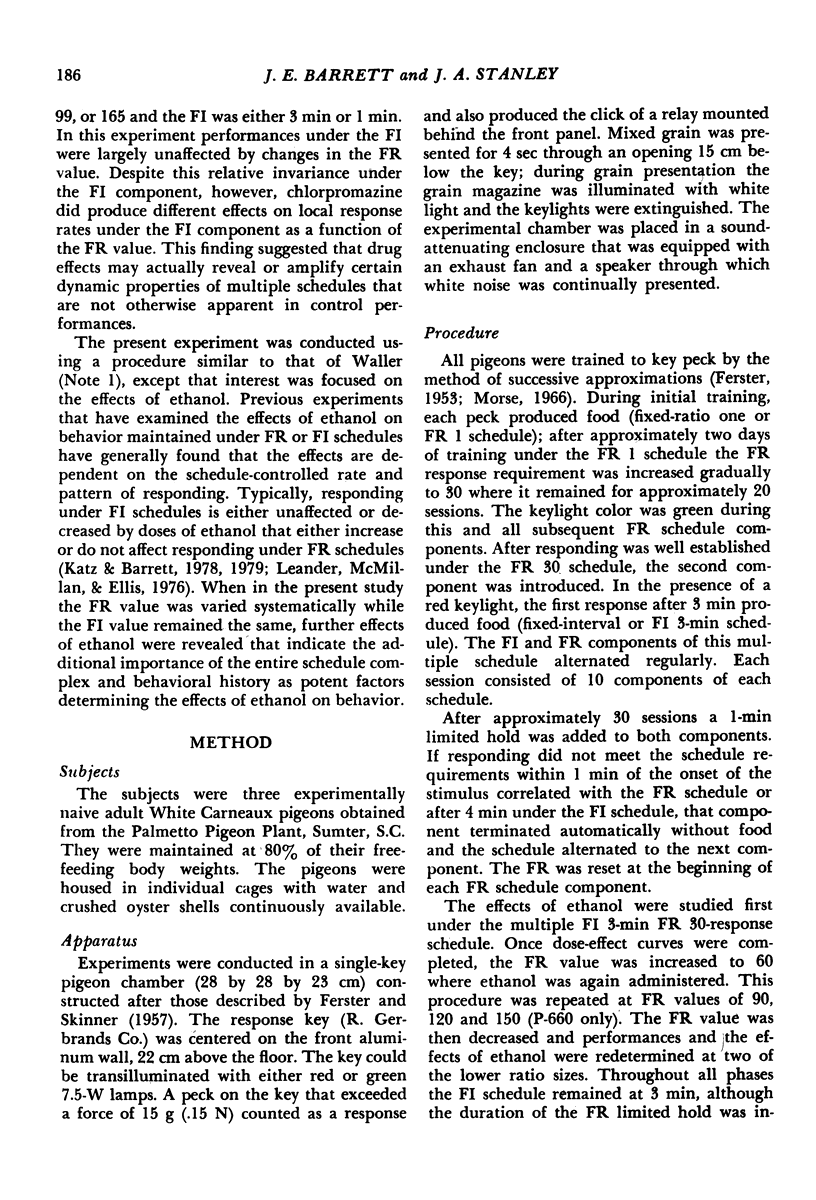
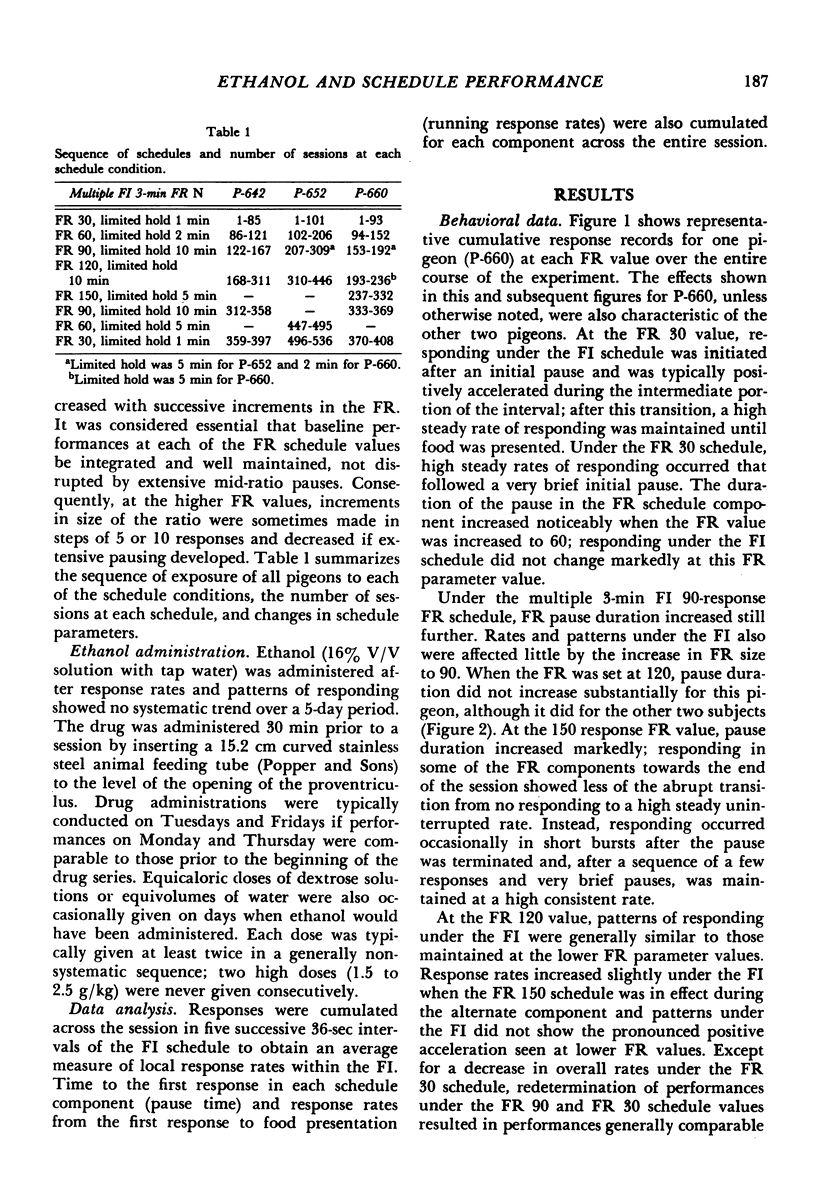
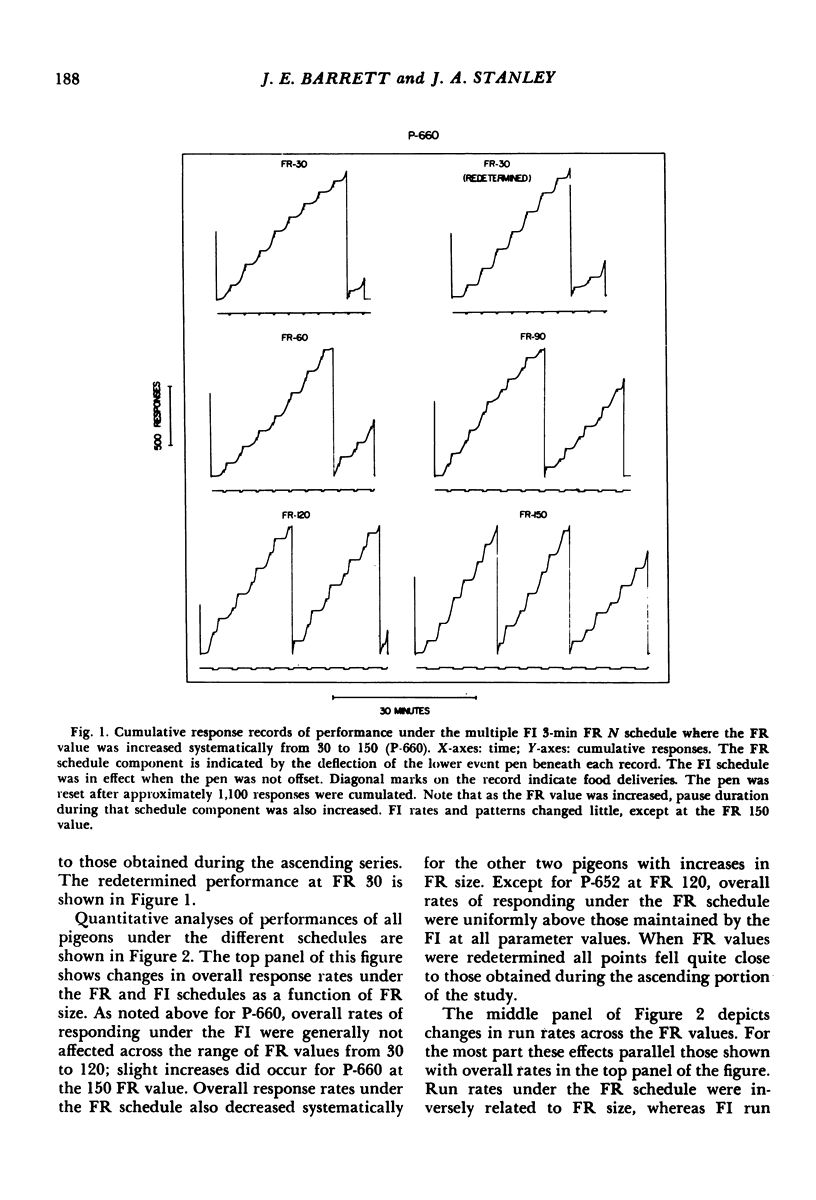
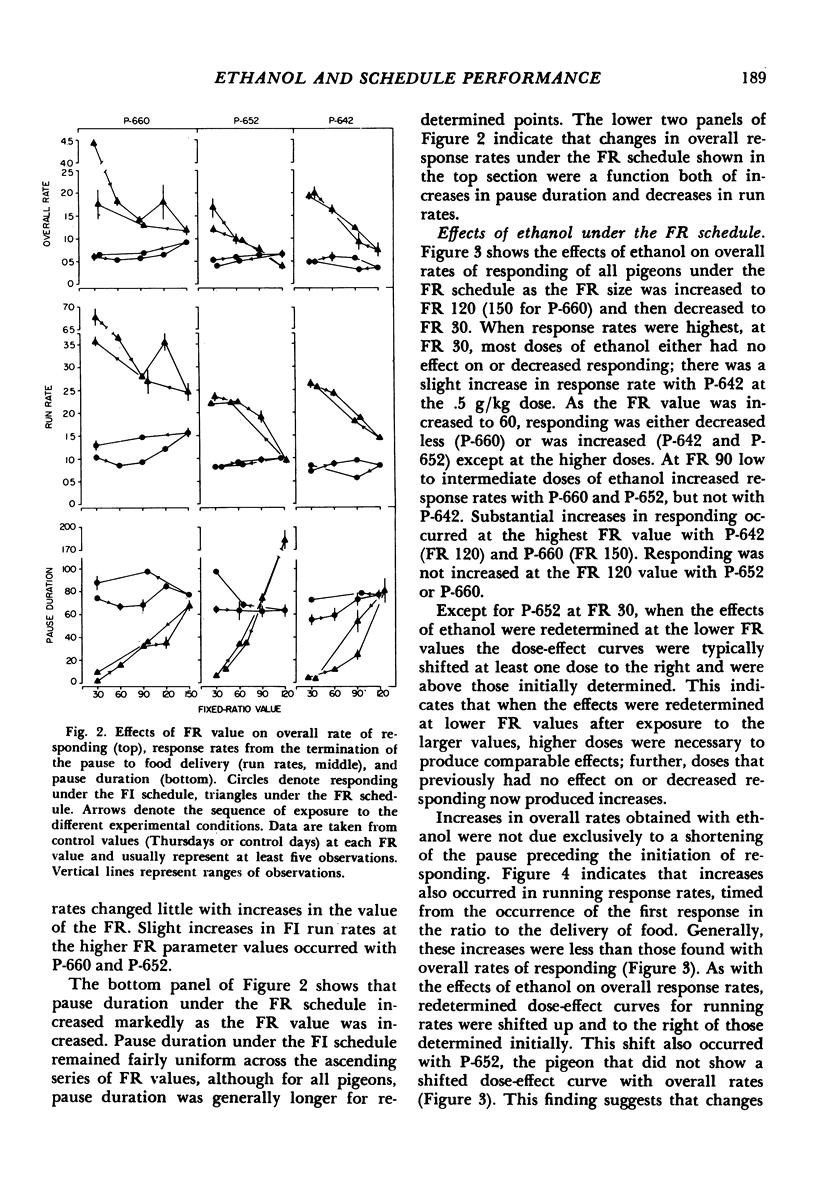
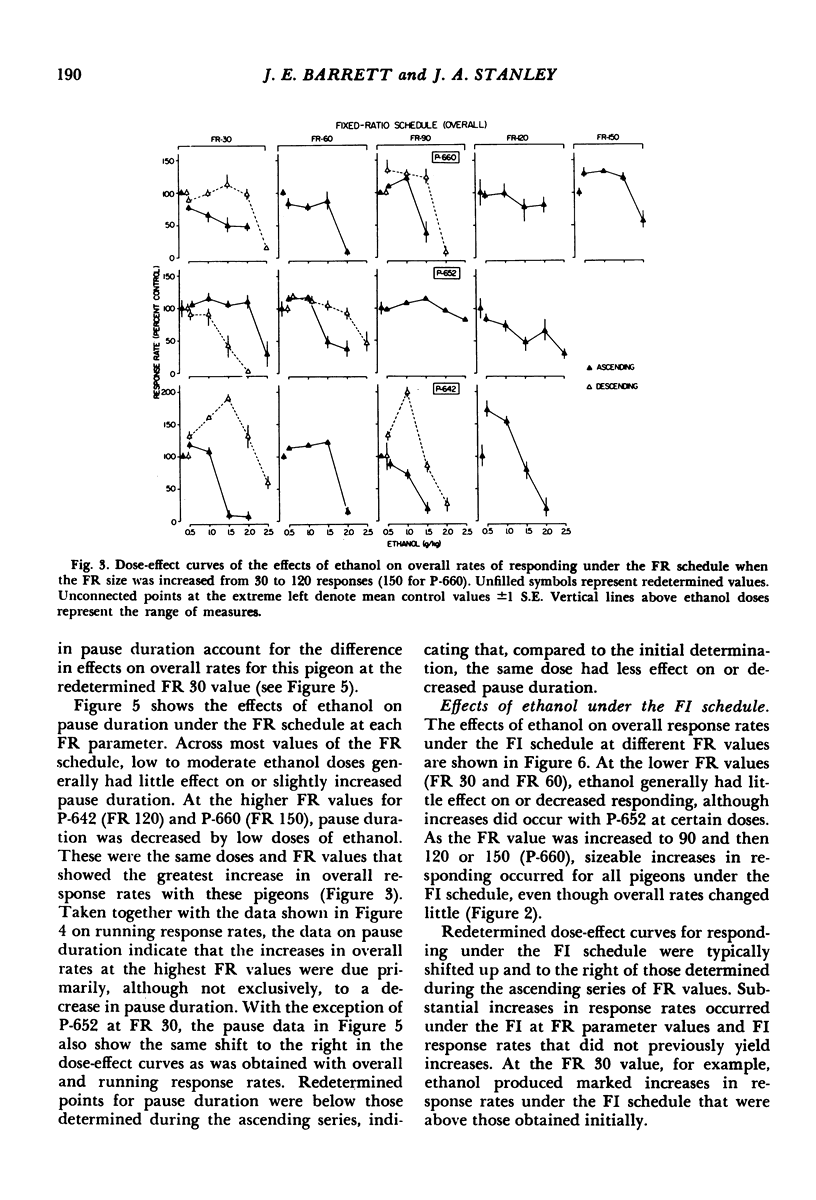
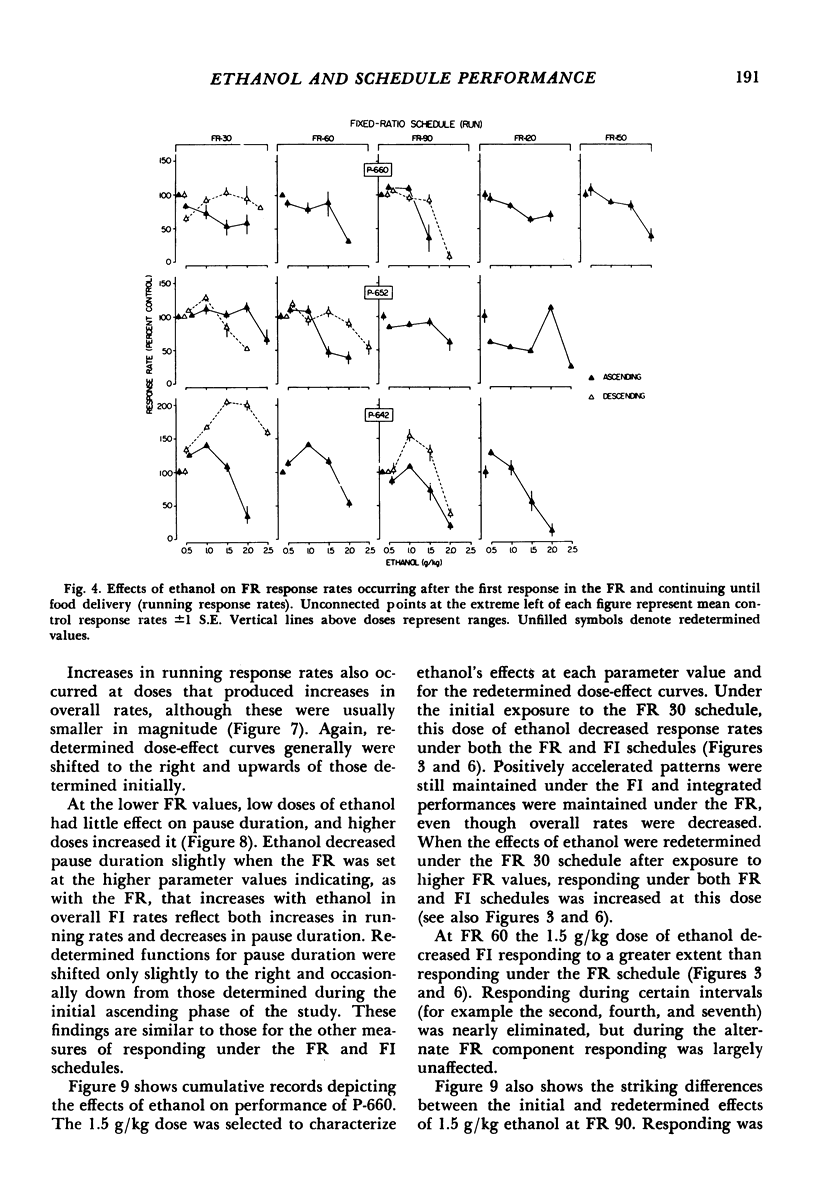
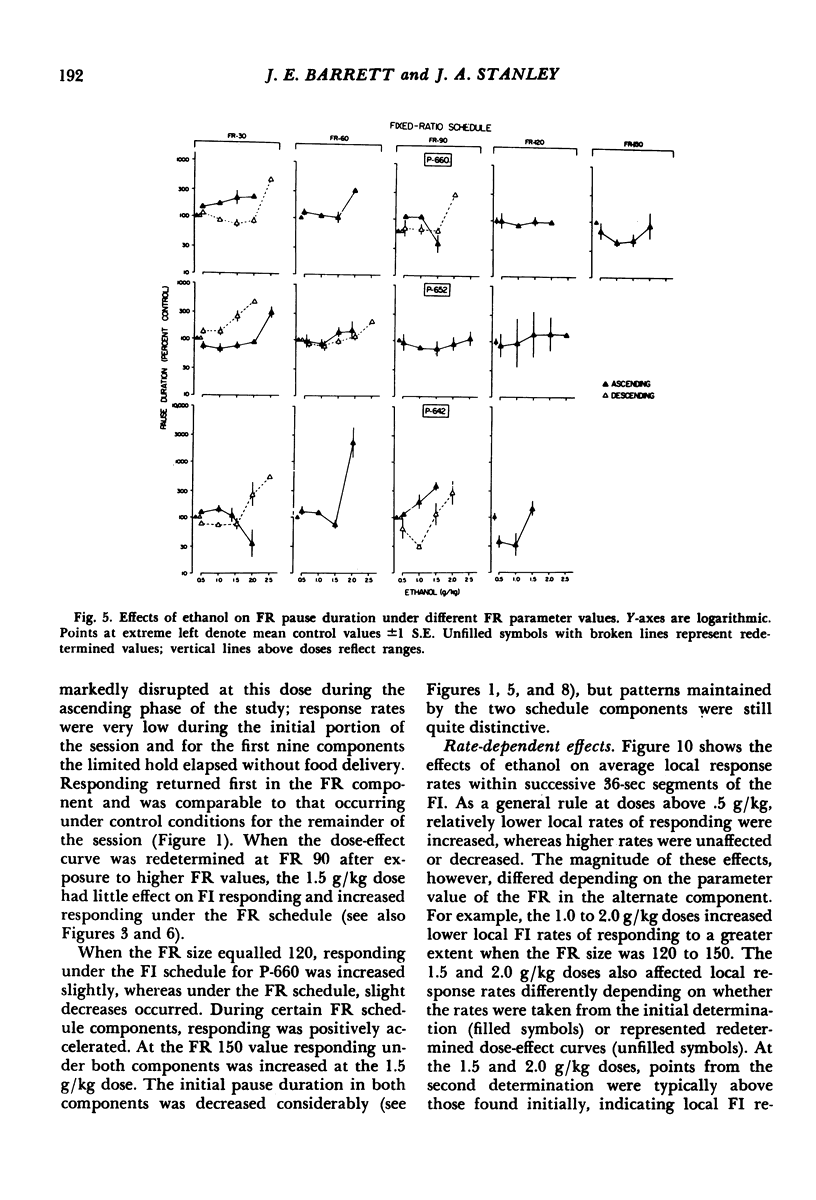
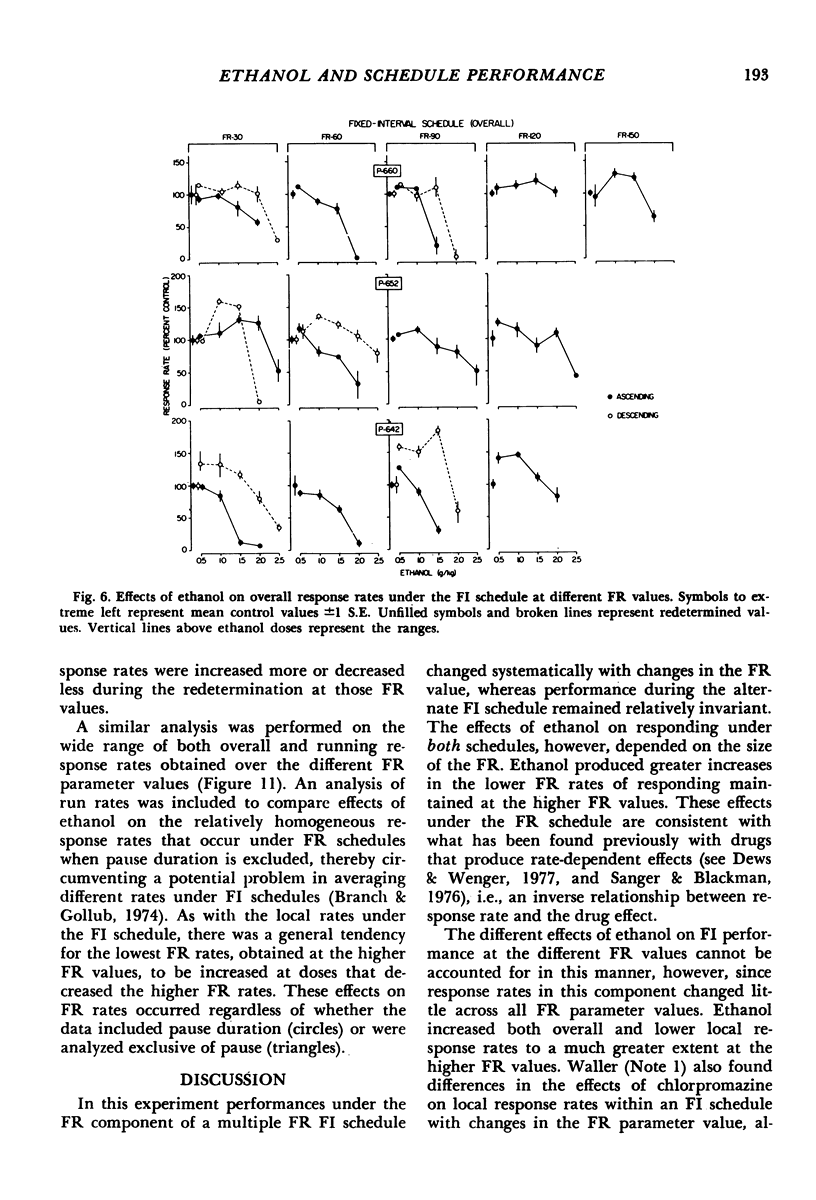
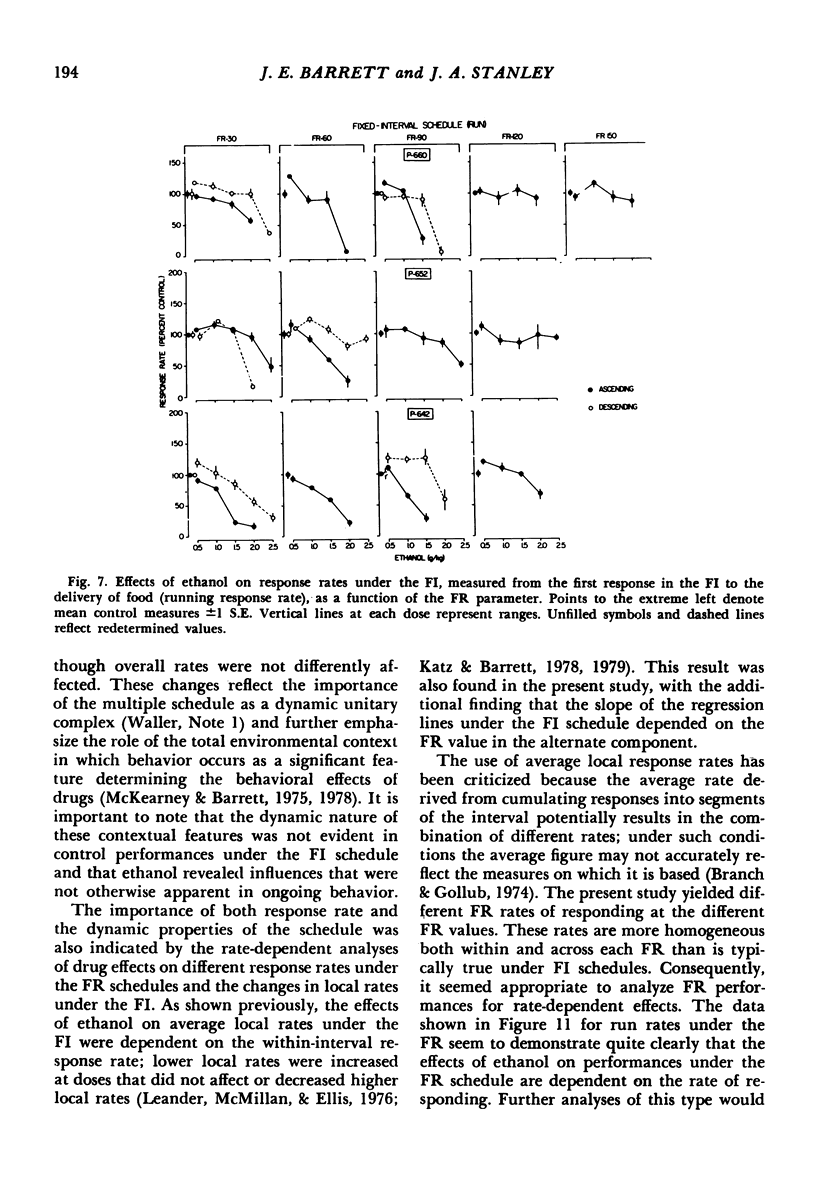
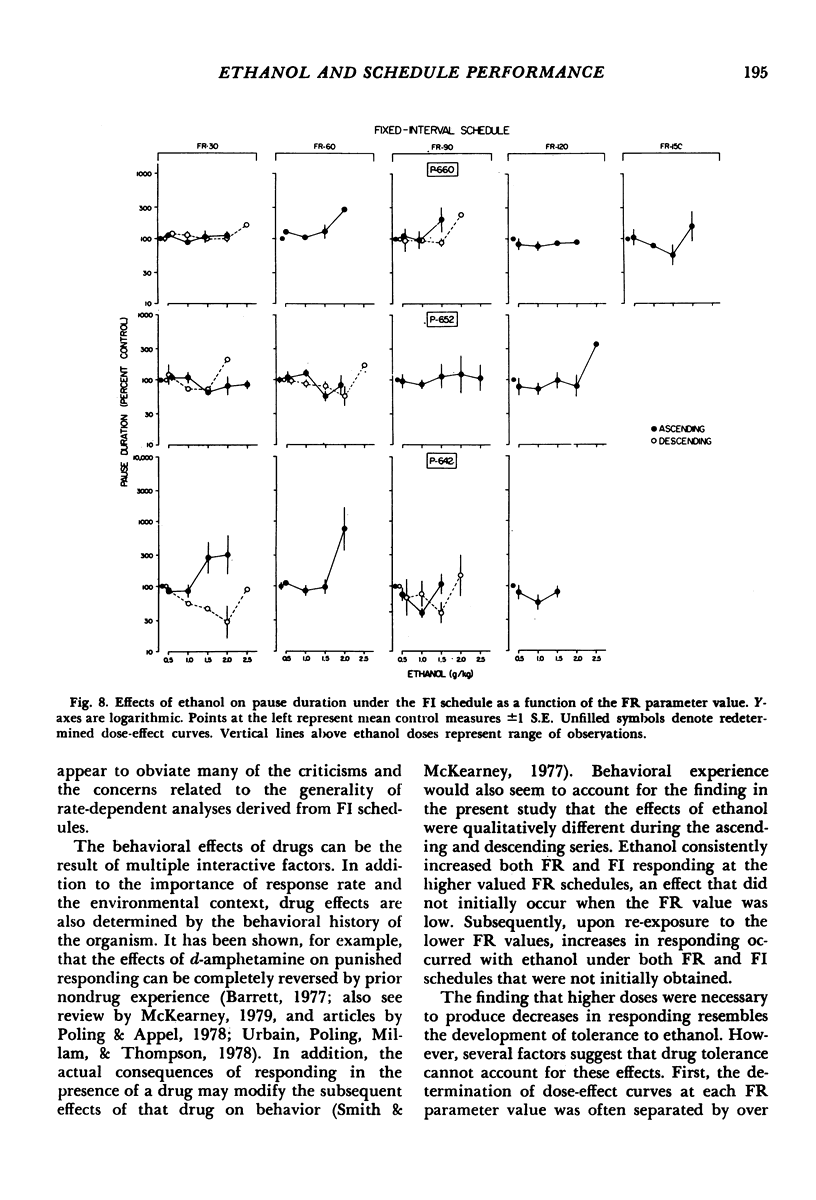
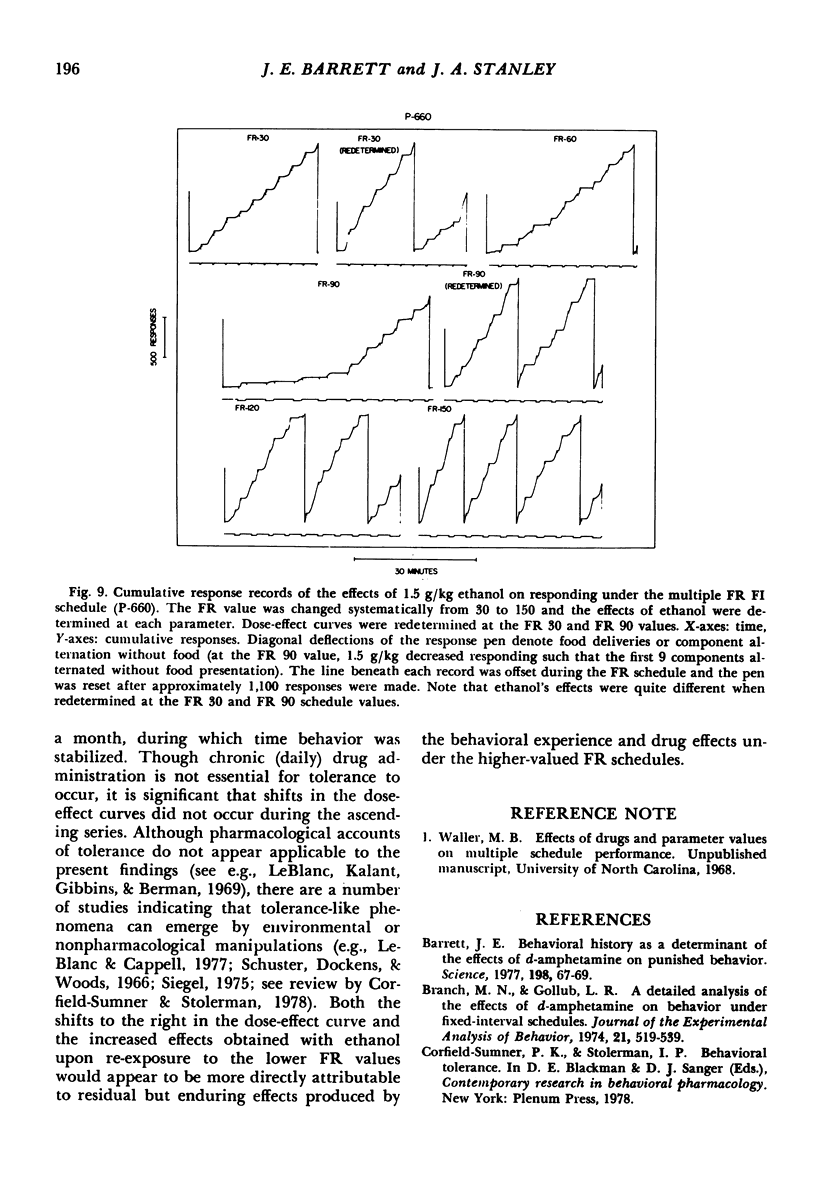
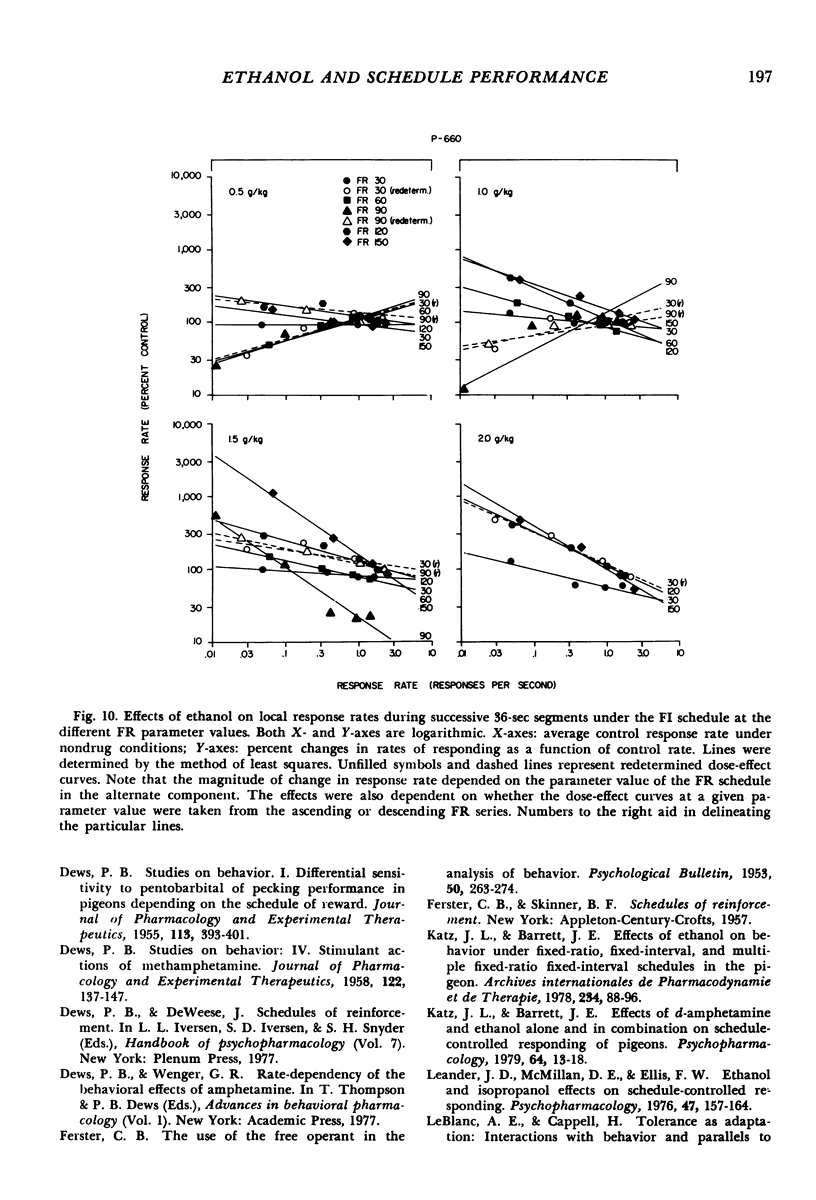
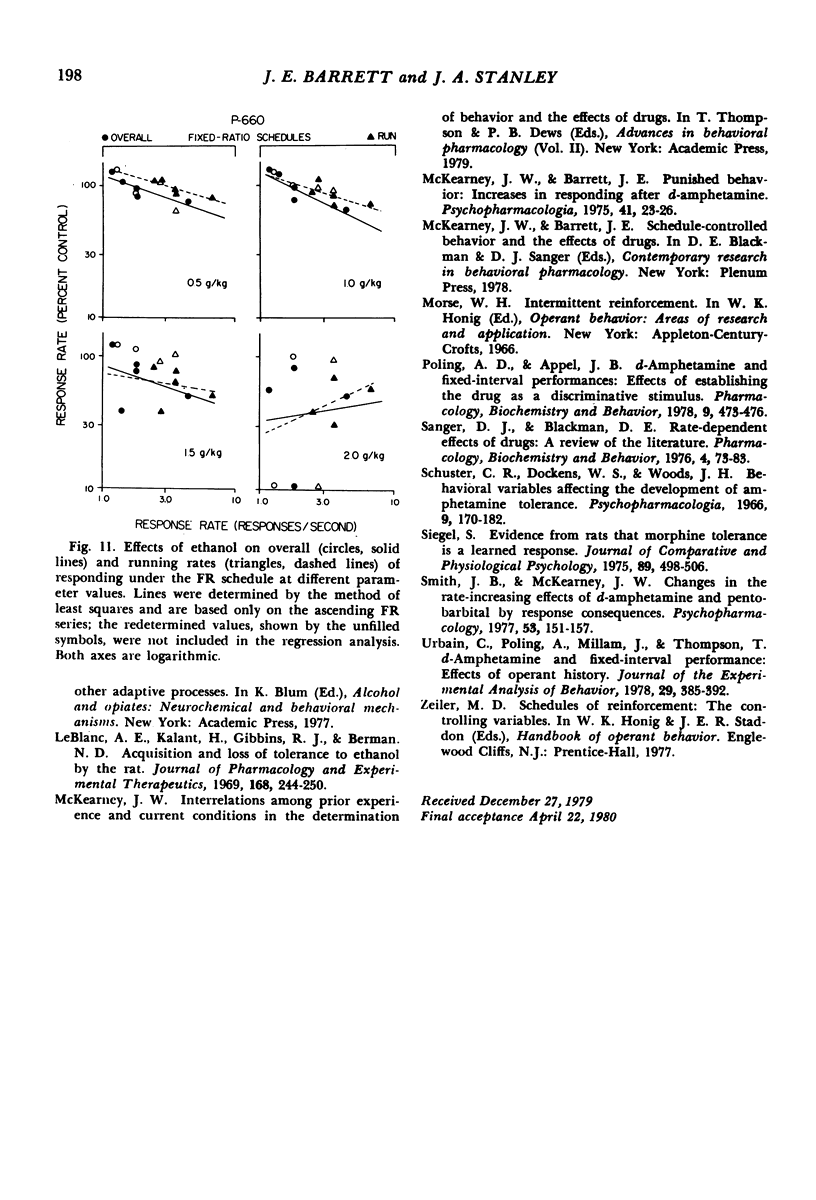
Selected References
These references are in PubMed. This may not be the complete list of references from this article.
- Barrett J. E. Behavioral history as a determinant of the effects of d-amphetamine on punished behavior. Science. 1977 Oct 7;198(4312):67–69. doi: 10.1126/science.408925. [DOI] [PubMed] [Google Scholar]
- Branch M. N., Gollub L. R. A detailed analysis of the effects of d-amphetamine on behavior under fixed-interval schedules. J Exp Anal Behav. 1974 May;21(3):519–539. doi: 10.1901/jeab.1974.21-519. [DOI] [PMC free article] [PubMed] [Google Scholar]
- DEWS P. B. Studies on behavior. I. Differential sensitivity to pentobarbital of pecking performance in pigeons depending on the schedule of reward. J Pharmacol Exp Ther. 1955 Apr;113(4):393–401. [PubMed] [Google Scholar]
- DEWS P. B. Studies on behavior. IV. Stimulant actions of methamphetamine. J Pharmacol Exp Ther. 1958 Jan;122(1):137–147. [PubMed] [Google Scholar]
- FERSTER C. B. The use of the free operant in the analysis of behavior. Psychol Bull. 1953 Jul;50(4):263–274. doi: 10.1037/h0055514. [DOI] [PubMed] [Google Scholar]
- Katz J. L., Barrett J. E. Effects of d-amphetamine and ethanol alone and in combination on schedule-controlled responding of pigeons. Psychopharmacology (Berl) 1979 Jun 28;64(1):13–18. doi: 10.1007/BF00427338. [DOI] [PubMed] [Google Scholar]
- Katz J. L., Barrett J. E. Effects of ethanol on behavior under fixed-ratio, fixed-interval, and multiple fixed-ratio fixed-interval schedules in the pigeon. Arch Int Pharmacodyn Ther. 1978 Jul;234(1):88–96. [PubMed] [Google Scholar]
- LeBlanc A. E., Kalant H., Gibbins R. J., Berman N. D. Acquisition and loss of tolerance to ethanol by the rat. J Pharmacol Exp Ther. 1969 Aug;168(2):244–250. [PubMed] [Google Scholar]
- Leander J. D., Mcmillan D. E., Ellis F. W. Ethanol and isopropanol effects on schedule-controlled responding. Psychopharmacologia. 1976 May 28;47(2):157–164. doi: 10.1007/BF00735815. [DOI] [PubMed] [Google Scholar]
- McKearney J. W., Barrett J. E. Punished behavior: increases in responding after d-amphetamine. Psychopharmacologia. 1975;41(1):23–26. doi: 10.1007/BF00421301. [DOI] [PubMed] [Google Scholar]
- Poling A. D., Appel J. B. d-Amphetamine and fixed-interval performance: effects of establishing the drug as a discriminative stimulus. Pharmacol Biochem Behav. 1978 Oct;9(4):473–476. doi: 10.1016/0091-3057(78)90044-8. [DOI] [PubMed] [Google Scholar]
- Sanger D. J., Blackman D. E. Rate-dependent effects of drugs: a review of the literature. Pharmacol Biochem Behav. 1976 Jan;4(1):73–83. doi: 10.1016/0091-3057(76)90178-7. [DOI] [PubMed] [Google Scholar]
- Schuster C. R., Dockens W. S., Woods J. H. Behavioral variables affecting the development of amphetamine tolerance. Psychopharmacologia. 1966;9(2):170–182. doi: 10.1007/BF00404721. [DOI] [PubMed] [Google Scholar]
- Siegel S. Evidence from rats that morphine tolerance is a learned response. J Comp Physiol Psychol. 1975 Jul;89(5):498–506. doi: 10.1037/h0077058. [DOI] [PubMed] [Google Scholar]
- Smith J. B., McKearney J. W. Changes in the rate-increasing effects of d-amphetamine and pentobarbital by response consequences. Psychopharmacology (Berl) 1977 Jul 18;53(2):151–157. doi: 10.1007/BF00426485. [DOI] [PubMed] [Google Scholar]
- Urbain C., Poling A., Millam J., Thompson T. d-amphetamine and fixed-interval performance: effects of operant history. J Exp Anal Behav. 1978 May;29(3):385–392. doi: 10.1901/jeab.1978.29-385. [DOI] [PMC free article] [PubMed] [Google Scholar]


